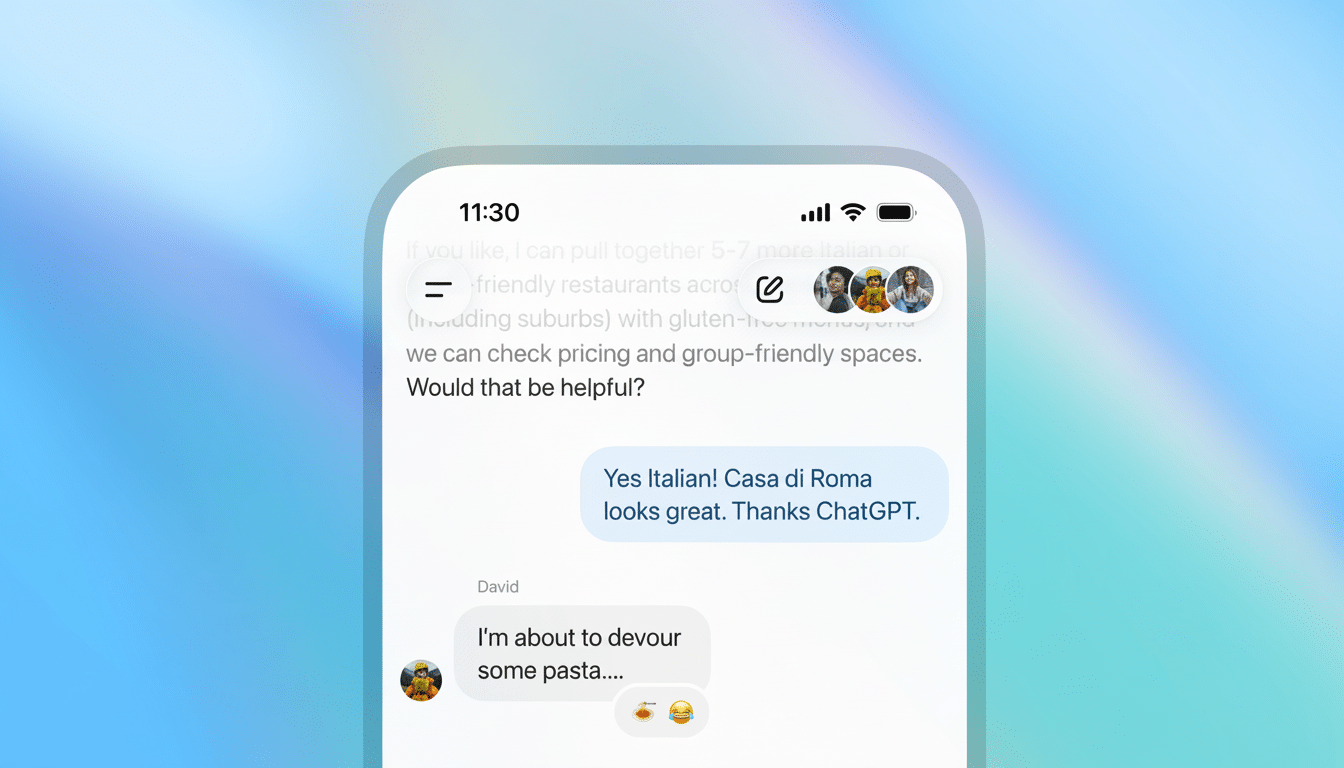OpenAI has opened ChatGPT group chats (available initially in Japan, New Zealand, South Korea, and Taiwan), which is a move away from one-to-one help for shared, live collaboration.
The feature is now rolling out on web and mobile to Free, Plus, and Team users, as the company wants structured feedback before a broader expansion.
- What the ChatGPT group chat pilot includes and offers
- Privacy and safety guardrails for group conversations
- Why these four markets were chosen for the pilot
- Early use cases and limitations seen in the pilot
- A step toward a social layer within ChatGPT group chats
- What to watch next as the group chat pilot evolves

What the ChatGPT group chat pilot includes and offers
Groups can accommodate 1 to 20 people, and are invitation-only; you bring participants in via links or direct adds. Add someone to an extant thread, and ChatGPT spins up a new group, preserving the original conversation. The section for each group contains a short profile, and there’s a labeled sidebar to make multi-party threads easy to track.
Here, in these rooms, ChatGPT acts more like a partner than a narrator. Users can @ChatGPT to ask for a response; otherwise, the model is trained to read the room and step back when humans have it. Emoji reactions and on-the-fly, personalized emoji images derived from profile photos provide a light layer of social polish.
Responses are GPT-5.1 Auto with search, image generation, file uploads, and dictation support. And, more significantly, usage caps are only enforced when the AI responds—human-to-human communication never counts—so it’s designed to promote engagement without selectively targeting speech.
Privacy and safety guardrails for group conversations
OpenAI says personal conversations and memory are kept private, separate from group threads. Anyone can leave the group at any point and most members can remove others; the creator cannot leave of their own accord. Content filtering, extra protections, and parental controls are also present for those under 18.
The pilot’s invitation-only model complements stringent regional privacy frameworks—Japan’s APPI, South Korea’s PIPA, Taiwan’s PDPA, and New Zealand’s Privacy Act—all of which stress consent, data minimization, and clear accountability. OpenAI has not explained regional data residency, but the company’s focus on explicit group membership and opt-out controls speaks to lessons arising from previous regulator scrutiny of AI data treatment across the OECD.
Why these four markets were chosen for the pilot
These four markets are the most chat-centric in the world, and therefore ideal testing grounds for multi-user AI. LINE said it has around 90M+ monthly actives in Japan and strong penetration in Taiwan, while KakaoTalk reaches the overwhelming majority of people living in South Korea, according to company filings. New Zealand is smaller, with high broadband and smartphone usage and a strong ethic of international cooperation, so it’s a more pristine context within which to assess the productivity effects of small-team engagement.

That backdrop is important: when messaging, for as much derision as we like to pile on it, has become the default operating system for work and even life itself, embedding an AI collaborator right into group threads can short-circuit context switching and start counteracting tool sprawl. For OpenAI, it’s a controlled experiment in how culturally disparate user bases interact with an AI peer—from Japanese study circles to Korean SMB teams to trans-Tasman project groups.
Early use cases and limitations seen in the pilot
Early adopters may rely on ChatGPT for collaborative brainstorming, rapid research, and multilingual cooperation. Imagine a product team in Seoul creating the specs using the model to summarize documents and generate possible edge cases, or a university student in Tokyo simply speaking their ideas and having the text translated into another language automatically. Humans can act as triage in customer support, but the model would fetch policy snippets and draft replies for human review.
File uploads in group threads facilitate analyzing the same document together, but also pose governance questions for organizations with tight classification rules. That’s just as well because enterprise customers will demand granular admin roles, message retention policies, and audit trails—features that seem to follow once a consumer-style pilot proves sticky.
A step toward a social layer within ChatGPT group chats
The pilot is a sign of OpenAI’s shifting priorities away from a solitary assistant and toward something closer to a lightweight social platform. The company has dabbled with messaging features, and its recent Sora 2 app (an app for sharing AI-generated video in a feed that includes parental controls and DMs) suggests a willingness to build community products around generative media. Group chats within ChatGPT extend that arc by meeting users where work and conversation already live.
What to watch next as the group chat pilot evolves
OpenAI characterizes this as an initial foray, with further iteration and expansion depending on user input. Areas to watch:
- Larger room sizes
- Better moderation and admin tools
- Enterprise policy controls
- Improved multilingual handoffs
- Smarter turn-taking so the model speaks only when needed
If retention holds and misuse stays low, the product could see a global rollout—and tighter integrations with workplace suites alike.

